Have you got something that you could file under ‘professional interests‘ (or, more to the point in some cases, ‘professional obsessions’)? Mine is language production.
That is why I am always on the lookout for new ideas on how to trick my students into producing more and more. And more. Some of these ideas can be found on this blog, in the posts on the discourse clock, pairwork for pre-schoolers, using songs or cognitive skills-based activities to develop speaking. Today – a new post in the series.
It was probably one of those free-falling searches on Instagram, with no rhyme and reason, that got me to Saffira Mattfield’s (@onlinespeechie) Instagram post on Colourful Semantics. A very special moment, like when you stumble upon a proper toolbox with the screwdrivers and bolts and saws and monkey wrenches…Or, when in the supermarket, you wander into the baking aisle and, all of a sudden, all the professional decorations and ingredients right within your arm’s reach…This amazing and a very powerful feeling of: ‘I could do so much with it!’
Colourful Semantics
The approach was created in the 90s by a UK-based speech therapist Alison Bryan in order to help children develop their speaking skills especially as regards the use of full sentences, storytelling and so on.
The main idea behind colourful semantics is the colour-coding of parts of speech and the parts of the sentence and developing the habit of including all the necessary ‘ingredients’ in the simpler or more complex sentences. This is done with the use of the cards, like those in the photograph below. Subject (who?) is orange, verb (what doing) – yellow, object (what?) – green and, location (where?) – blue.
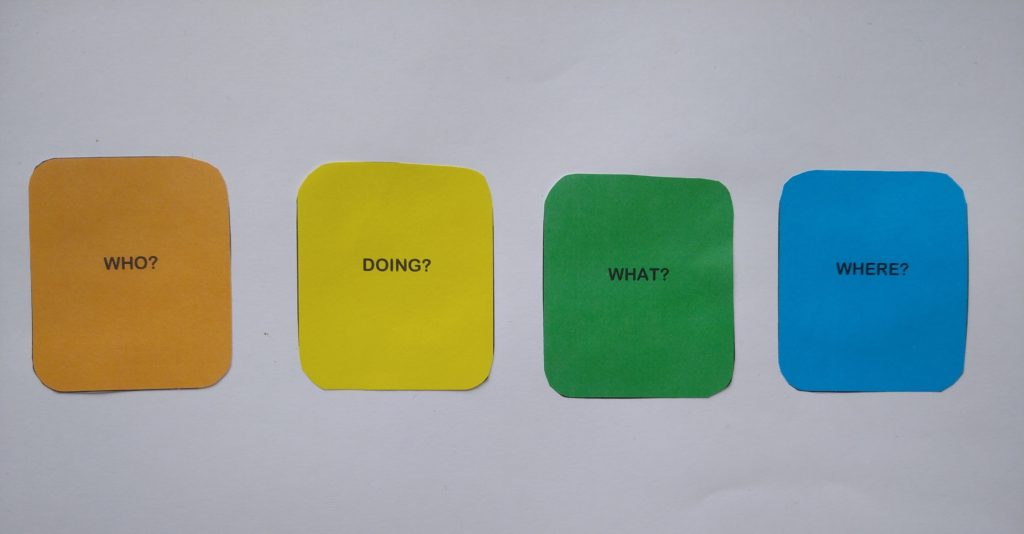
Children start with building simple sentences by using only two cards, for example ‘The girl’ (an orange card) and ‘is painting’ (a yellow card) and putting them next to each other on the template. Later on they move to constructing sentences made of three elements, for example ‘The girl’ (an orange card), ‘is painting’ (a yellow card) and ‘a balloon’ (a green card) or even four, by adding the blue card with the location, for example ‘in the park’. They not only learn to remember to include all the elements but they can also manipulate them physically. The sentence itself becomes less abstract since it all its key elements are represented visually.
If you are interested in all the details, please have a look at the bibliography.
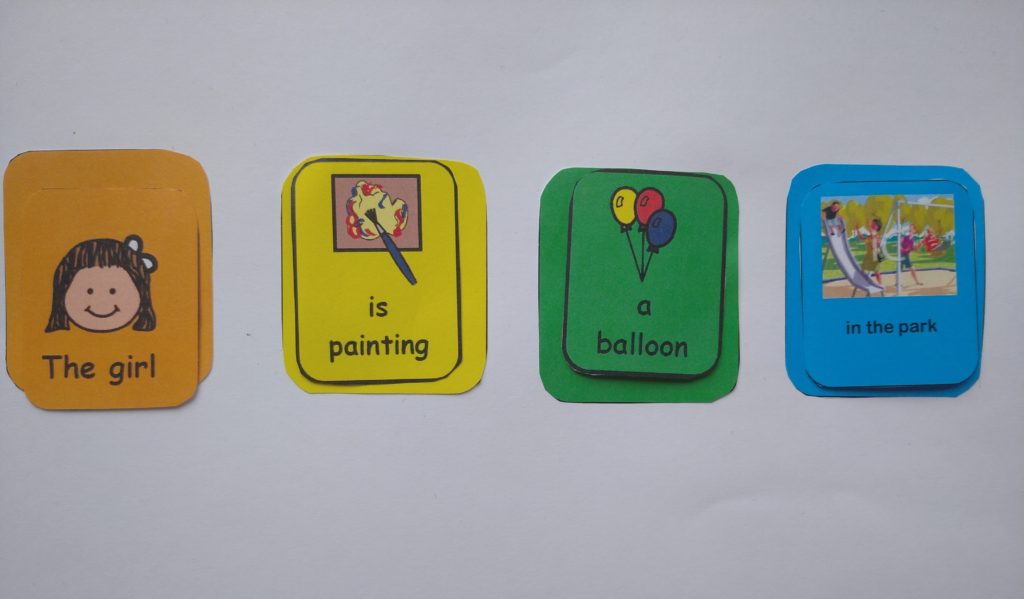
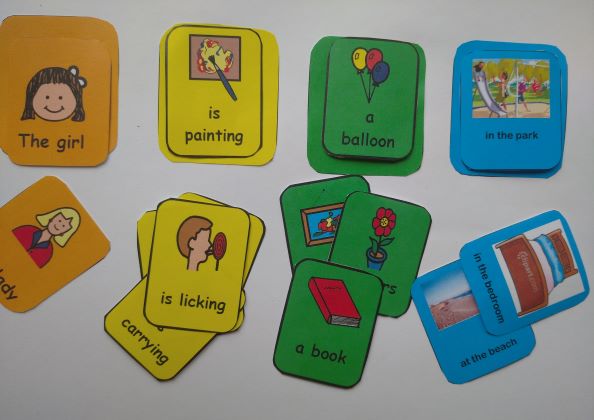
Colourful Semantics in EFL? Yes, please!
Colourful semantics perfectly resonates with everything that I have been doing in my lessons. Grammar structures and the format of the sentence are an abstract concept, beyond the grasp of pre-schoolers especially those who live in their own country, surrounded mostly by their mother tongue and not exposed to a sufficient amount of the target language. By using some kind of a visual representation of the parts of speech or the parts of the sentence, we make it more accessible to them and we enable production.
This visual representation can be realised through:
- using gestures such as ‘pointing at yourself and sliding the hand along your body to draw attention to your clothes’ for ‘I am wearing’
- using symbols such as ‘a heart’ for ‘I like’ and ‘a crossed heart’ for ‘I don’t like’
- using flashcards such as ‘big’ and ‘cat’ to elicit a chunk ‘a big cat’
And…colours!
While making the sentences, students will be required to use all the required colours, ‘to tick all the boxes’, this way building a full sentence or a phrase. Of course, they might require more support from the teacher who will have to ensure that they did not skip any of the elements, but, the hope is that with time, including all the elements will become a habit.
Colourful semantics in the EFL classroom: how to get started
Step one: very easy
Get in touch with Saffira (@onlinespeechie) in order to get your own set of the ready-made cards. It is a perfect way of familiarising yourself with the colourful semantics in practice and to understand how it can be adapted to our EFL context. Although, of course, these cards can be used in the EFL classroom as they are, depending on the level of your students.
Step two: adapting the idea to your groups’ needs
The materials presented below were used with a group of the second level of four- and five-year-olds. Since they were still learning online, they were not using any real cards but only the visuals created with the Miro board. The unit was built around the topic of the house and included some furniture vocabulary, the prepositional phrases ‘the cat is on the sofa’ and some of the Present Continuous based on a story as well as a song.
The boards were used to practise these phrases were used later in the unit, when the student had become familiar with all the basic components. The main structure ‘The mice are having fun’ was introduced through a song. The first time the cards were used, the teacher was a very active participant, taking turns with all the kids to make sentences. In the following lessons, the teacher only modelled the activity and was responsible for moving the pictures around in accordance with the sentences the kids were producing.
The first set was designed to support the production of the sentences with the preposition ‘on’ which were later practised in a freer practise activity (‘My room’) whereas the second one focused on Present Continuous which was later reinforced in a storybook activity.
For the time being, a decision was made not to adapt the original colour-coding system and instead, a set of colours was assigned freely to each structure, to help the children associate them with each particular components of different structures, rather than with the whole system.
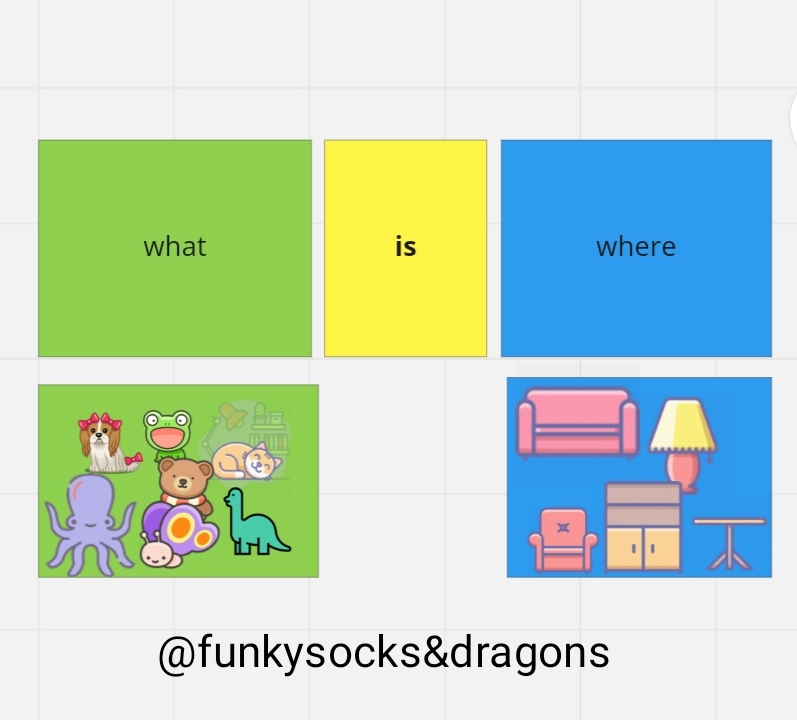
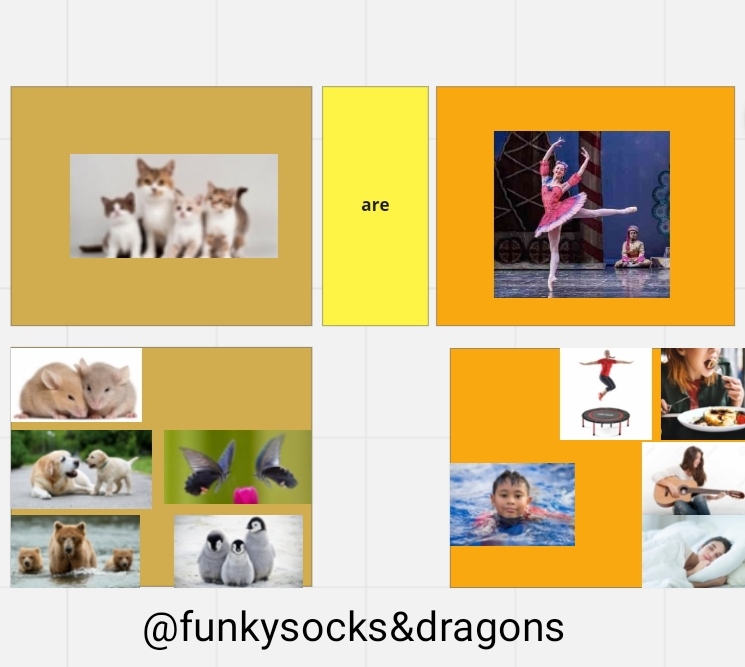
Reflection time
I have just started experimenting with this approach in my classes but the first steps in the world of Colourful Semantics have been more than exciting. This is definitely not the end of that adventure. Right now I am working on a set of cards that I could share with the parents of my students so that they could be printed, cut up and used at home.
Want to find out more? Start here:
Bryan, A. (1997) Colourful Semantics: thematic role therapy. In Chiat, S., Law, J. and Marshall, J. (Eds) Language Disorders in Children and Adults: Psycholinguistic approaches to therapy. London
Bolderson et al in (2011) Colourful Semantics: A Clinical Investigation. Child Language Teaching and Therapy October 2011 vol. 27 no. 3 344-353
Saffira Mattfiled @onlinespeechie
Colourful Semantics from London Speech Therapy
5 thoughts on “Colourful Semantics in EFL?”